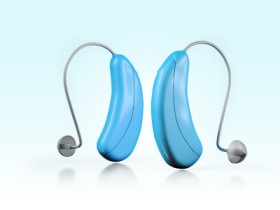When it comes to choosing a hearing aid, the variety of options available can be overwhelming. Each type of hearing aid has unique features and benefits designed to meet specific needs. Here’s a breakdown of the most common types of hearing aids to help you make an informed decision.
Behind-the-Ear (BTE) Hearing Aids BTE hearing aids are worn behind the ear and are connected to an earmold inside the ear canal. They are suitable for all types of hearing loss and are known for their durability and power. BTE devices often come with additional features like directional microphones and telecoils.
In-the-Ear (ITE) Hearing Aids ITE hearing aids fit entirely inside the outer ear and are slightly larger than in-the-canal devices. They are easier to handle and can accommodate a wider range of hearing losses. Their larger size allows for additional features such as volume control and a larger battery.
In-the-Canal (ITC) and Completely-in-the-Canal (CIC) Hearing Aids These types of hearing aids fit partially or completely inside the ear canal, making them less visible. ITC and CIC aids are best for mild to moderate hearing loss. They offer a natural sound experience but may be harder to handle due to their small size.
Receiver-in-Canal (RIC) Hearing Aids RIC hearing aids are similar to BTE devices but with a more discreet design. The receiver is placed in the ear canal, connected to the main body of the hearing aid by a thin wire. This design offers a comfortable fit and reduces feedback.
Choosing the right hearing aid depends on various factors, including the degree of hearing loss, lifestyle, dexterity and cosmetic preferences. Consulting with an audiologist is crucial to find the perfect match for your needs.

